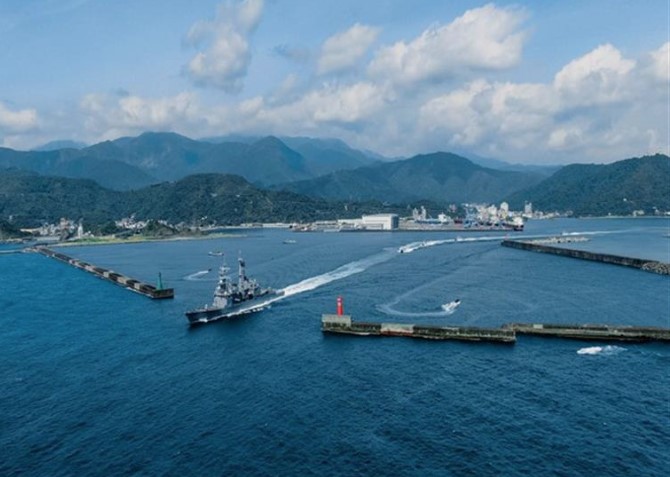Taiwan’s Ministry of National Defence (MND) reported on Monday that 13 Chinese military aircraft and six naval vessels were operating near the island until 6 a.m. local time. Out of the 13 aircraft, eight crossed the median line of the Taiwan Strait, entering Taiwan’s northern, southwestern, and southeastern Air Defense Identification Zone (ADIZ).
Chinese Military Activity Intensifies Around Taiwan
The MND confirmed that Taiwanese forces were closely monitoring the situation and responding as necessary to the Chinese military presence. Meanwhile, in a post on X, the ministry stated that the detection of 13 sorties of the People’s Liberation Army (PLA) aircraft, alongside six vessels from the People’s Liberation Army Navy (PLAN), reflected China’s ongoing military pressure around Taiwan.
Furthermore, this event follows a similar incident reported just a day earlier. On Sunday, Taiwanese authorities detected 16 Chinese aircraft, eight naval vessels, and one official ship operating near the island’s air and maritime zones. Of those aircraft, for instance, 13 crossed the median line, entering the northern, southwestern, and southeastern sectors of Taiwan’s ADIZ.
The repeated incursions illustrate a clear pattern of increased Chinese military activity near Taiwan. That is to say, the median line of the Taiwan Strait has long been considered a de facto buffer zone between the two sides, helping to prevent direct military confrontations. By repeatedly crossing this line, moreover, Chinese aircraft signal a strong show of force, consequently increasing tensions in the region.
Detailed Air and Naval Movements Around Taiwan
The MND reported that the detected PLA aircraft included various types of fighter jets and surveillance planes. These aircraft entered Taiwan’s ADIZ in multiple directions, covering northern, southwestern, and southeastern sectors. Meanwhile, the six naval vessels patrolling near Taiwan ranged from frigates to larger warships, keeping close watch on Taiwan’s maritime boundaries.
Taiwanese authorities emphasized that all Chinese movements were closely tracked. While there were no direct clashes, the presence of both aircraft and naval vessels near Taiwan’s defense zones demonstrates the potential for escalation if either side miscalculates. The ministry noted that Taiwan’s military units were ready to respond to any threats in the air or at sea.
Such repeated incursions underscore the strategic significance of Taiwan’s air and maritime zones. Analysts point out that these operations test Taiwan’s readiness and provide China with an opportunity to showcase its military capabilities. The frequent presence of Chinese forces also highlights the sensitivity of the Taiwan Strait, a critical region for international shipping and regional security.
Naval Blockade Feasibility Discussed
Amid these ongoing movements, Taiwanese defense experts have questioned claims that China could easily enforce a full naval blockade of Taiwan using only a few submarines. Experts explained that sustaining a blockade would be extremely difficult, even for nuclear-powered submarines.
Submarines require regular resupply, crew rotations, and maintenance. No submarine can remain in position indefinitely, and extended operations increase the risk of mechanical or logistical failures. Analysts also emphasized that other naval forces in the region could intercept Chinese submarines, making the return journey to their ports dangerous.
Taiwan’s defensive capabilities further complicate such attempts. With modern anti-ship weapons and surveillance systems, the island can detect and respond to potential blockades, making it highly challenging to maintain one successfully. These logistical and operational constraints make a full-scale blockade by only a few submarines unlikely, despite China’s overall military strength.
The repeated crossings of the median line and the sustained presence of multiple Chinese aircraft and warships illustrate the complexities of naval and air operations around Taiwan. These developments highlight both the strategic importance of the Taiwan Strait and the need for constant vigilance by Taiwan’s military.
